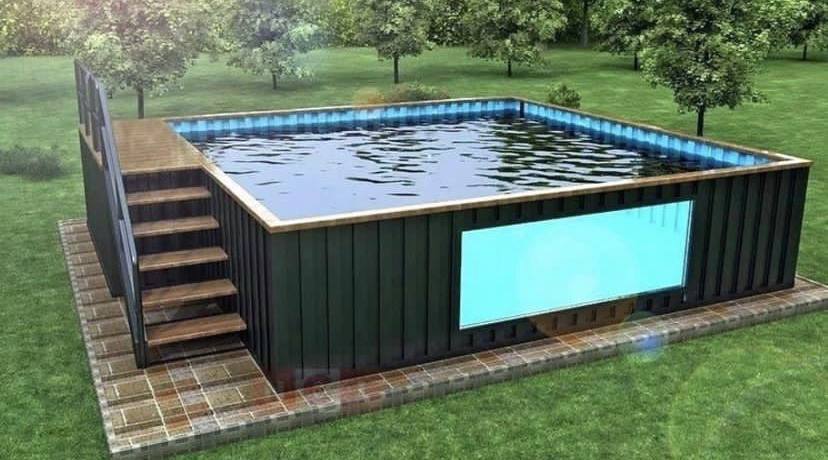Uncategorized
Shipping container pool

Shipping container pool
A shipping container pool, container pool or a cargo container pool, is a type of swimming pool . These containers are typicallymade of steel and are designe to transport goods across long distances by sea, so they are structurally strong and durable.
Converting a shipping container into a pool involves modifying it to create a watertight structure suitable for swimming.
- Selecting the container: Choose a shipping container that is in good condition and meets your desired size requirements. Standard shipping containers are typically 20 or 40 feet long, 8 feet wide, and 8.5 feet tall.
- Cleaning and preparation: Thoroughly clean the container and remove any rust or residue from its interior. Make sure to seal any existing openings or gaps to prevent water leakage.
- Structural modifications: Cut out openings in the container for entry and exit points. You may also want to add windows or skylights for natural lighting. Reinforce the container’s walls and floor to ensure structural integrity.
- Insulation and waterproofing: Apply insulation to regulate the pool’s temperature and prevent condensation.
- Plumbing and filtration system: Install a plumbing system to circulate and filter the pool water. This typically includes water intake and return pipes, as well as a filtration system to keep the water clean.
- Decking and finishing touches: Create a surrounding deck or platform for easy access and aesthetics. Consider adding steps, a ladder, or a pool cover to enhance safety and functionality.
- Filling and maintenance: Fill the container pool with water and balance the pool’s chemical levels according to standard pool maintenance practices. Regularly clean and maintain the pool to ensure water quality and longevity.
Converting a shipping container into a pool can present certain challenges and considerations. Here are some common ones:
- Structural modifications: Shipping containers are designed to withstand heavy loads, but cutting openings for windows, doors, and pool equipment may weaken their structural integrity. It’s crucial to work with a professional who can reinforce the container properly to maintain its strength and stability.
- Waterproofing and insulation: Ensuring that the container is completely waterproof is essential to prevent leaks and water damage. Additionally, proper insulation is crucial to regulate the pool’s temperature and prevent condensation buildup inside the container.
- Size limitations: Shipping containers come in standard sizes, typically 20 or 40 feet long. While these sizes can work well for smaller pools, they may not provide enough space for larger swimming pools or specific designs. If you have specific size requirements, it may be necessary to modify multiple containers or explore alternative pool construction methods.
- Access and ventilation: Consider how you will provide safe and convenient access to the pool. Cutting entry and exit points in the container and installing steps or ladders should be carefully planned. Additionally, proper ventilation is essential to maintain good air quality inside the container and prevent moisture-related issues.
- Permits and regulations: Before starting any construction project, it is important to check local building codes and regulations. Converting a shipping container into a pool may require permits and inspections, as there might be specific requirements regarding safety, electrical work, plumbing, and water drainage.
- Maintenance and cleaning: Container pools require regular maintenance and cleaning, just like traditional pools. However, accessing certain areas of the container for maintenance and repairs may be more challenging due to the confined space. It’s important to plan for easy access points and consider how maintenance tasks will be carried out.
- Delivery and installation: Shipping containers are heavy and may require specialized equipment for delivery and placement. Ensure that you have a suitable location for the container pool and make arrangements for transportation and installation.
While converting a shipping container into a pool can be a unique and cost-effective solution, it’s advisable to consult with professionals experienced in container conversions and pool construction to address these challenges effectively and ensure a successful project.

